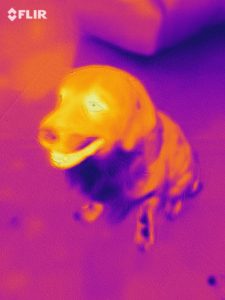Replacing the heating and or air conditioning in your home:
Heating and cooling your home takes energy. The national average of 57% delivered capacity means almost half of your heating and cooling energy is lost due to installation defects. You are paying for 100% of the energy your system is using, but you are only getting about half of the cooling in your home. HERS verification is a means to address the most common installation defects by measuring the installed system and comparing the results against the state minimums. Currently California Title 24 Part 6 requires third party verification of duct leakage, air flow, fan watt draw, and refrigerant charge. Not every job requires every test, the required tests are determined by which climate zone your home is located in. Along the coast is mild so there is less testing required, inland and desert areas have more extreme conditions so they have more required testing.
Duct Leakage: The ducts which convey the air from the spaces in your home to the equipment and then back to your home play a large part in the system capacity. Department of Energy research shows that duct leakage is between 30 and 40% for the average home. California Title 24 Part 6 requires the duct leakage is tested to verify it does not leak more than 15% for an existing home and less than 5% for a new construction home.
Duct leakage causes other issues in the home as well. Leaky ducts cause air from crawl spaces, attics, and other undesirable spaces to be introduced into the home bringing dust and other contaminants into the living spaces. Supply duct leaks in the attic can cause condensation and other moisture issues which will lead to mold. Duct leakage also creates pressure imbalances on the home which can create life safety issues when natural gas or other combustion appliances back draft due to negative pressure created on the home by the HVAC system.
The team at AAE have performed hundreds of duct leakage verifications for code compliance. The test involves sealing all of the supply registers in the home and connecting a “Duct Blaster” calibrated fan to the system. We then pressurize the duct system using our calibrated fan following the states procedure to measure the duct leakage. If the system does not comply with the allowed leakage then our team can stay onsite with our equipment connected to assist the installing contractor with troubleshooting. Our team members have additional certifications in system design and optimization which the average contractor does not poses. Put our experience and knowledge to work on your system for the best compliance experience possible.
Air Flow: Air flow is the most important aspect to proper system operation. If the duct system is not properly designed to move the required air flow then the fan has to use more energy to move the air. In addition to using more energy to move the air other issues like system short cycling, frozen coil and inability to dehumidify occur. Industry standard air flow for air conditioning is 400 Cubic Feet per Minute (CFM) of air per ton of cooling. The minimum required for compliance with California energy code is 350CFM per ton of cooling. The average installed system air flow is between 280 and 330 CFM per ton, well below the industry standard of 400CFM per ton.
Fan Watt Draw: The amount of energy used to power the fan which moves the air is going to be affected by the duct system design. The fan watt draw test is performed in conjunction with the air flow test to confirm the fan motor is not using an extreme amount of energy to comply with the air flow requirement. Current air handlers for heat pumps and gas furnaces are allowed a watt draw of 0.58 watts per CFM of air moved. This allowance drops to 0.45 watts per CFM for gas furnaces January 1, 2020.
Refrigerant Charge Verification: Refrigerant is the medium which is used to move the heat from the evaporator (inside the house) to the condenser (outside the house). If there is not enough refrigerant in the system then the system capacity will suffer. Think of your car radiator only half full of water, are you going to try to cross the Mojave? Air conditioning equipment typically comes pre charged with enough refrigerant for 15 feet of line set. If the distance between the outdoor unit and the indoor unit is longer than 15 feet (90% of homes in CA) then installer will have to add refrigerant, if it is shorter, they may have to remove refrigerant. Refrigerant Charge Verification is measuring the system under operating conditions to confirm it has the manufacture specified amount of refrigerant.



